Canyon's second lightweight is the Spectral:ONfly, with 150mm travel, aggro geometry and burly components its built to shred... but is the TQ motor and small battery enough?
You know the old saying, wait ages for a bus and then two come along at once. This time it’s not a double decker lumbering into view though, it’s Canyon’s new Spectral:ONfly: a lightweight e-bike that’s packed with cool features and powered by a whisper-quiet TQ motor. It follows the Neuron:ONfly launched earlier this year and doubles the German brand’s SL lineup in just six months.
Is it any good though? The best lightweight electric mountain bikes perfectly match power and agility to create what some would consider the ultimate use of an e-bike motor – head over to our full review of the top end Canyon Spectral:ONfly LTD to see if it’s been done right.

The Spectral:ONfly gets 10mm more travel than Canyon’s other SL e-bike, the Neuron:ONfly
Spectral:ONfly need to know
- Canyon’s second SL e-bike, following the short-travel Neuron:ONfly CF 9 I reviewed in the spring
- Spectral:ONfly gets a carbon frame, 150mm travel, 160mm fork and mullet wheels
- Powered by the TQ HPR 50 motor, with 50Nm torque and 300w peak power
- Fixed internal 360Wh battery (no big 580Wh TQ battery then), with a 160Wh range extender (sold separately)
- Four bikes in the range, from the CF8 with RockShox Select+ suspension for £5,199: up to £8,349 for the LTD bike with Fox Factory fork and shock
- Lightweight, with the range topping LTD weighing just 18.1kg in size medium
- Four-bar suspension design with reduced anti-squat, and similar progression to the regualar Spectral
- K.I.S. steering stabiliser comes on all bikes

It’s a mullet-only setup for the new bike, with 29in up front and a 27.5in at the rear
What is the Spectral:ONfly?
Fly is Canyon’s shorthand for lightweight. Yup, it’s a terrible name, but never mind that, the bike looks really well done to me. It has more travel than the Neuron:ONfly, 150mm travel with a 160mm fork, and Canyon has built this bike for riders who want to shred the descents rather than flow over singletrack. That’s reflected in the 4e category frame, chunky gravity-orientated components and more aggressive geometry.
Is it properly lightweight?
YT just brought out its first ever SL e-bike, called the Decoy SN it rode like a super-aggressive enduro bike thanks to its coil shock and heavy components. It’s not light though, tipping the scales well above 20kg.

Mondraker’s Neat RR is the Neuron:ONfly’s closeset compitotor, with the same power, weight and purpose
The Spectral:ONfly here though is genuinely light, Canyon’s blurb suggests the frame alone is something like 2.65kg, while full bikes are just 18.1kg at their lightest (and in size medium). “That means a complete Spectral:ONfly iswithin 3.5kg” of the regular human powered Spectral then, Canyon claims.
To put that in perspective, the Mondraker Neat weighs a claimed 18.3kg in size medium and boasts the exact same travel and TQ motor, meaning the Spectral:ONfly is absolutely on point… but for much less money, which I’ll get to in a minute.
 Spectral:ONfly’s TQ motor
Spectral:ONfly’s TQ motor
TQ’s HPR50 motor has slipped out of the headlines in recent months, after I first tried the power unit two years ago on the Scott Lumen eRide 900. It’s got 50Nm of torque and 300w peak power, which means its one of the least powerful e-bike motors out there.
It’s one of the lightest though, at 1,850g, and most natural in feel, two traits Canyon was looking for in the new Spectral:ONfly. It wanted to make the bike feel natural when you’re pedalling it, and when you’re over the 25kph limiter and not pedalling it. Paul Burwell, who’s reviewed the bike for mbr can attest to the success of that as you’ll see when you read his review of the LTD bike.
The TQ motor is also one of the smallest and quietest motors, and that’s let Canyon design a bike that’s so non-e-bike in looks it almost looks too slight. Its silhouette could easily pass for a regular bike and Canyon’s addition of a motor is almost non-invasive, like keyhole surgery.
I also like the TQ motor, which clearly shows you how much battery is left and will display all kinds of useful and not so useful information like range, your power, the bike’s power and so on.
 …and battery
…and battery
There is a dinky non-removable 360Wh battery housed inside the downtube, and in part that’s responsible for the lightweight nature of the bike. TQ has recently released a bigger 580Wh battery for a motor and we’re surprised to see Canyon eschew this, but perhaps it wanted to prioritise weight.
If that’s not enough juice for you (and it almost certainly won’t be, I struggled to get past 1,000m of vertical climbing on the Scott Lumen) there’s also a range extender, with 160Wh that’ll boost the range by sound 44% and fits into the space of your bottle cage. As usual though, and unlike the Whyte E-Lyte, there’s no space to run a water bottle and a rangey.
 Should Canyon have gone with another motor?
Should Canyon have gone with another motor?
It looks to me as though Canyon has its motors on the wrong way round. When I went to the launch of the Neuron:ONfly I was actually amazed to see the Bosch SX motor powering the bike, with its punchy 55Nm of torque and claimed 600w peak power. A bike built for adventure, for singletrack, for light trail bike duties surely demands a light, almost imperceptible motor like the TQ, I thought.
Meanwhile, the Spectral:ONfly is built for steeper terrain and riders who are going to want to winch up and plummet down. The TQ might be underpowered in this situation, and the 360Wh battery will get rinsed pretty quickly under this kind of abuse.
 Frame details
Frame details
Canyon might have been late to the SL party, but it continues to push the boundaries when it comes to design and engineering. The bike gets its latest K.I.S steering stabiliser, which helps centre the front wheel when it gets deflected off course, something that was missing from the Neuron:ONfly back in the spring. Canyon expects – rightly, I’d guess – that riders who buy this bike will be hitting up some proper terrain on the descents and can better benefit from it than Neuron:ONfly riders.
Whether riders want K.I.S. remains to be seen, Danny Milner liked it when reviewing the Spectral CF 8 at its launch, with its performance “advantageous or neutral”. But plenty of riders have told since they resent K.I.S. and see it as a step too far, an imposition into the very essence of mountain biking. Still, if you don’t like it the feature is removable, and the control button to set the tension even comes with a plate to cover it up and hide it.
Canyon has also brought across its replaceable thread inserts on the frame bearings, meaning if you strip one of them you don’t have to bin off the entire frame.
 Suspension design
Suspension design
The bike uses the same Triple Phase suspension as the regular Spectral, that’s to say a four-bar design that’s helped the Spectral:ON CF9 full power e-bike win our e-bike of the year award in 2023. There are similar anti-rise rates as the bio bike, and the and initial leverage ratio values are the same, but Canyon says its reduced the anti-squat ever so slightly. We’d expect the bike to be slightly plusher than the bio bike, the increased weight and better sprung to unsprung ration notwithstanding.
The raw data here is it’s a 210×55mm shock, two of the bikes in the range of four get piggyback shocks, and you can upgrade to a coil aftermarket if you like. Interestingly, the motorised version of the Spectral gets 10mm more suspension than the regular bike front and rear.
Spectral:ONfly Geometry and Sizing
It’s an aggressive bike, with a 64 head angle, long reach at 495mm in large, and a long wheelbase. The chainstays are now 440mm on the back though, longer than those of the Spectral, and Canyon says that’ll give it more balance on the climbs. It’ll do the same on the descents too, of course.
There’s no clip chip to change any of this, and Canyon hasn’t added in size specific back ends either, so you might want to try the bike before you buy it and see if it fits. Particularly so if you’re getting one of the smaller sizes.
Bikes in the range
Four bikes in the European range, two if you’re in the US. All use the same carbon frame.
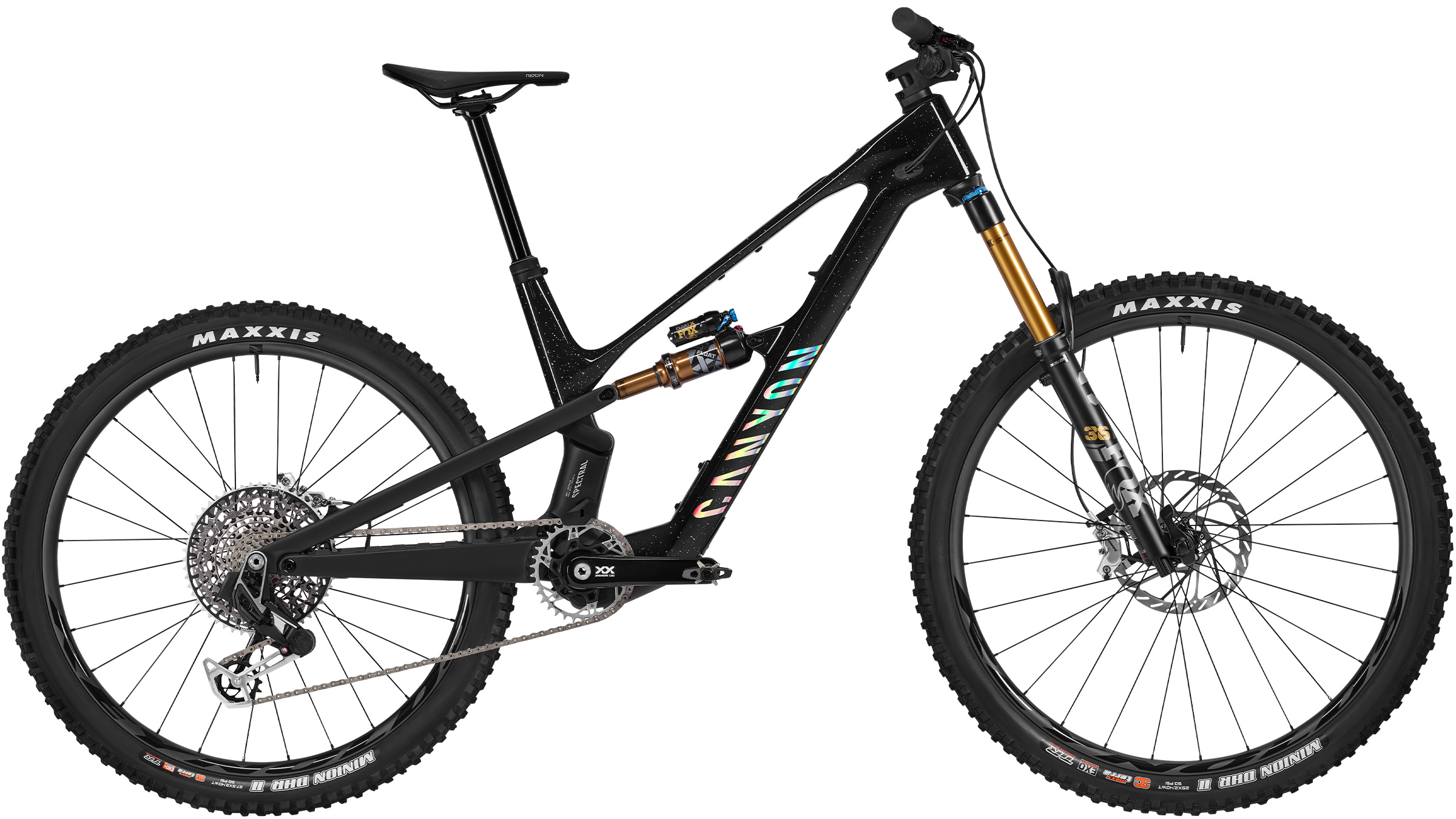 Spectral:ONfly CF LTD | £8,349 / € 8,999
Spectral:ONfly CF LTD | £8,349 / € 8,999
Top of the range LTD gets a Factory level Fox suspension, with a 36 up front and Float X shock. You get a SRAM XX Eagle Transmission wireless drivetrain, SRAM Code Ultimate Stealth stoppers, and a Reynolds Black Label Expert carbon wheelset.
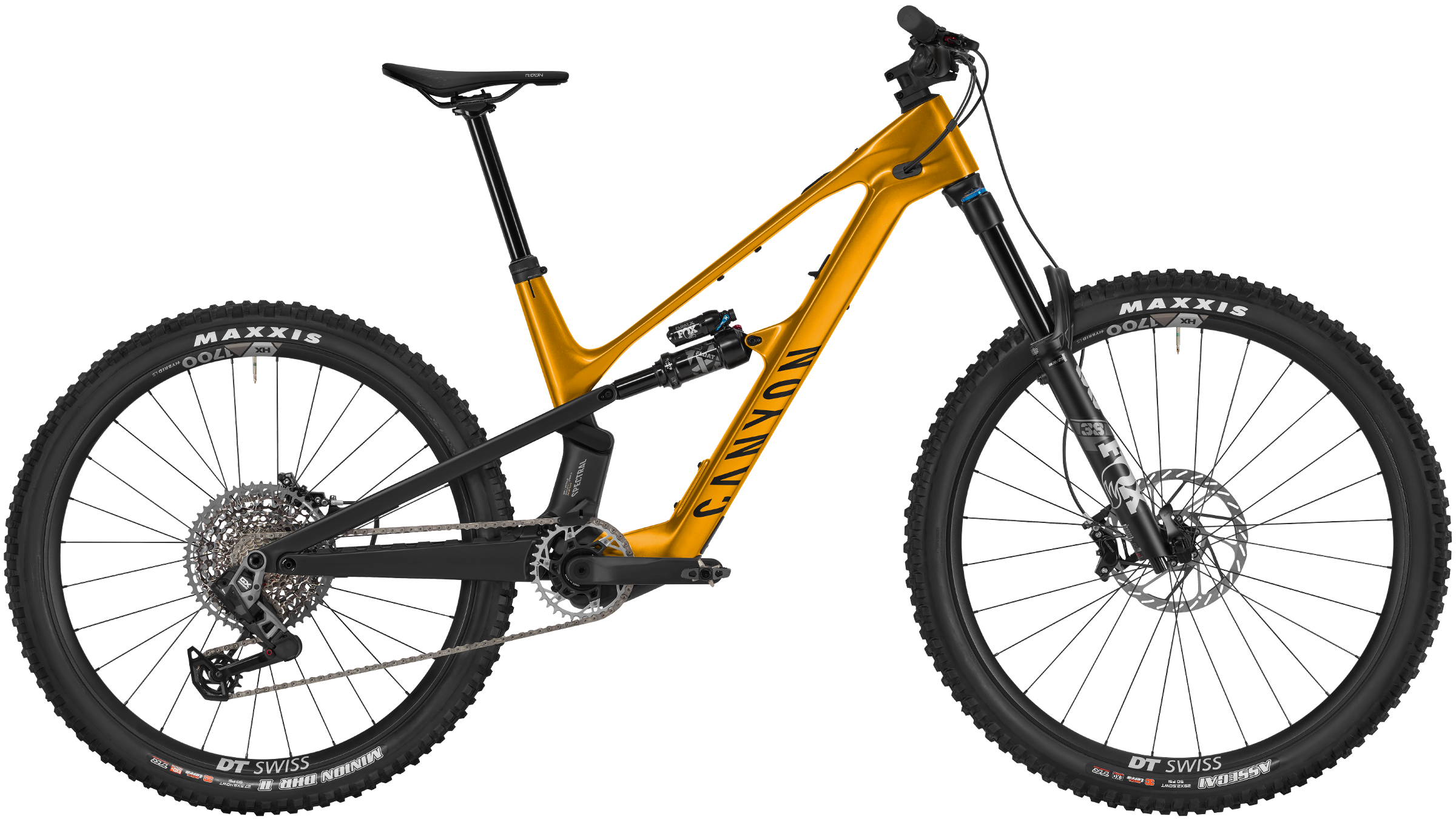 Spectral:ONfly CF CLLCTV | £6,799 / € 7,299 / $ 7,499
Spectral:ONfly CF CLLCTV | £6,799 / € 7,299 / $ 7,499
On spec alone, the CF CLLCTV is my pick of the range because it gets almost all the performance of the top end bike, for a lower price. That means you get Performance Elite Fox suspension (same damper, just without the Kashiman shaft coatings, SRAM GX Eagle Transmission wireless drivetrain, SRAM Code Silver Stealth brakes, and DT Swiss HX1700 LS wheelset.
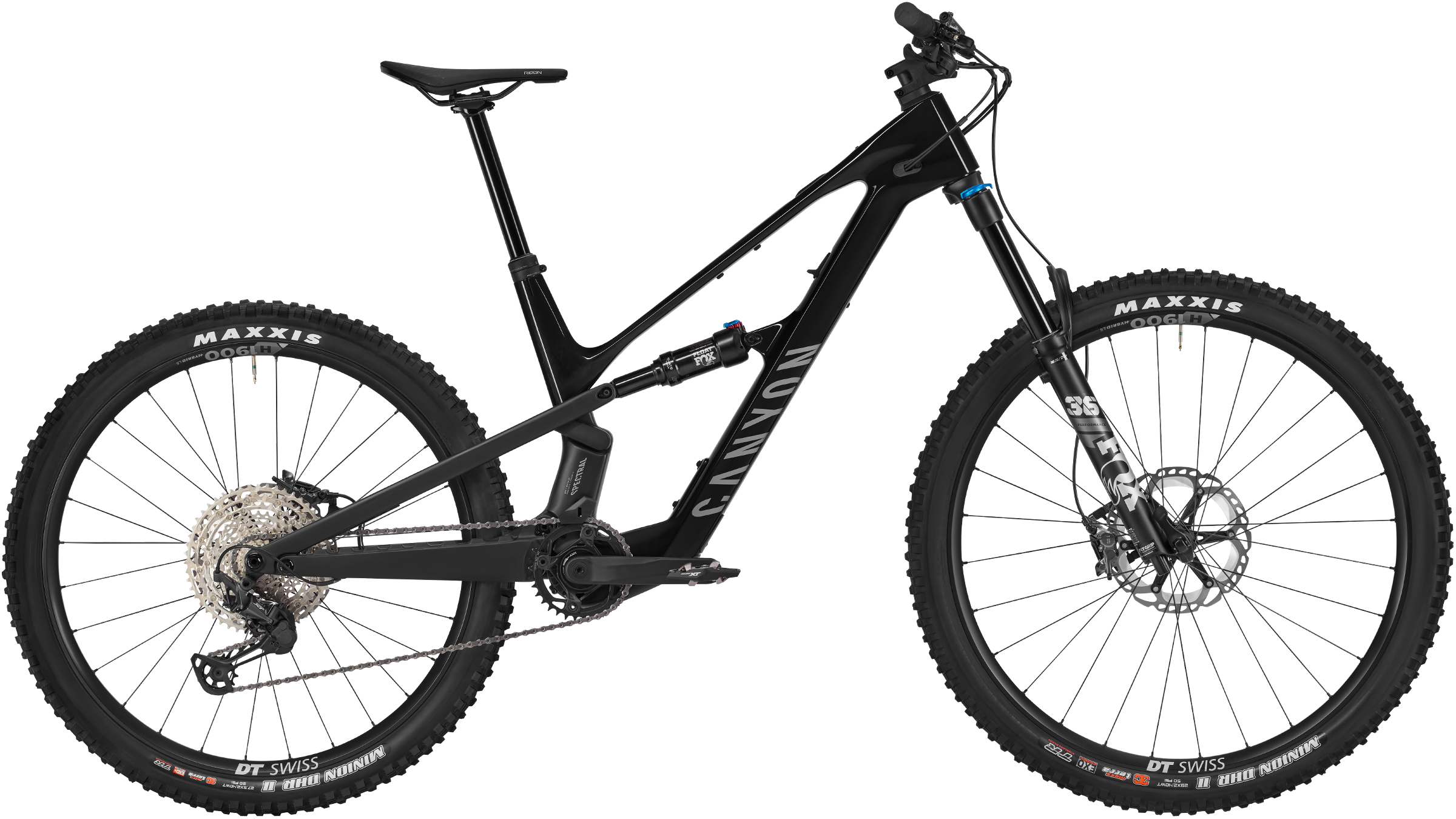 Spectral:ONfly CF 9 | £5,840 / € 6,299
Spectral:ONfly CF 9 | £5,840 / € 6,299
The CF9 sees suspension levels drop to Performance level for the 36 fork and Float DPS shock, but you still get the great Grip 2 damper in there. There’s a Shimano XT drivetrain and brakes, and DT Swiss H1900 LS hoops.
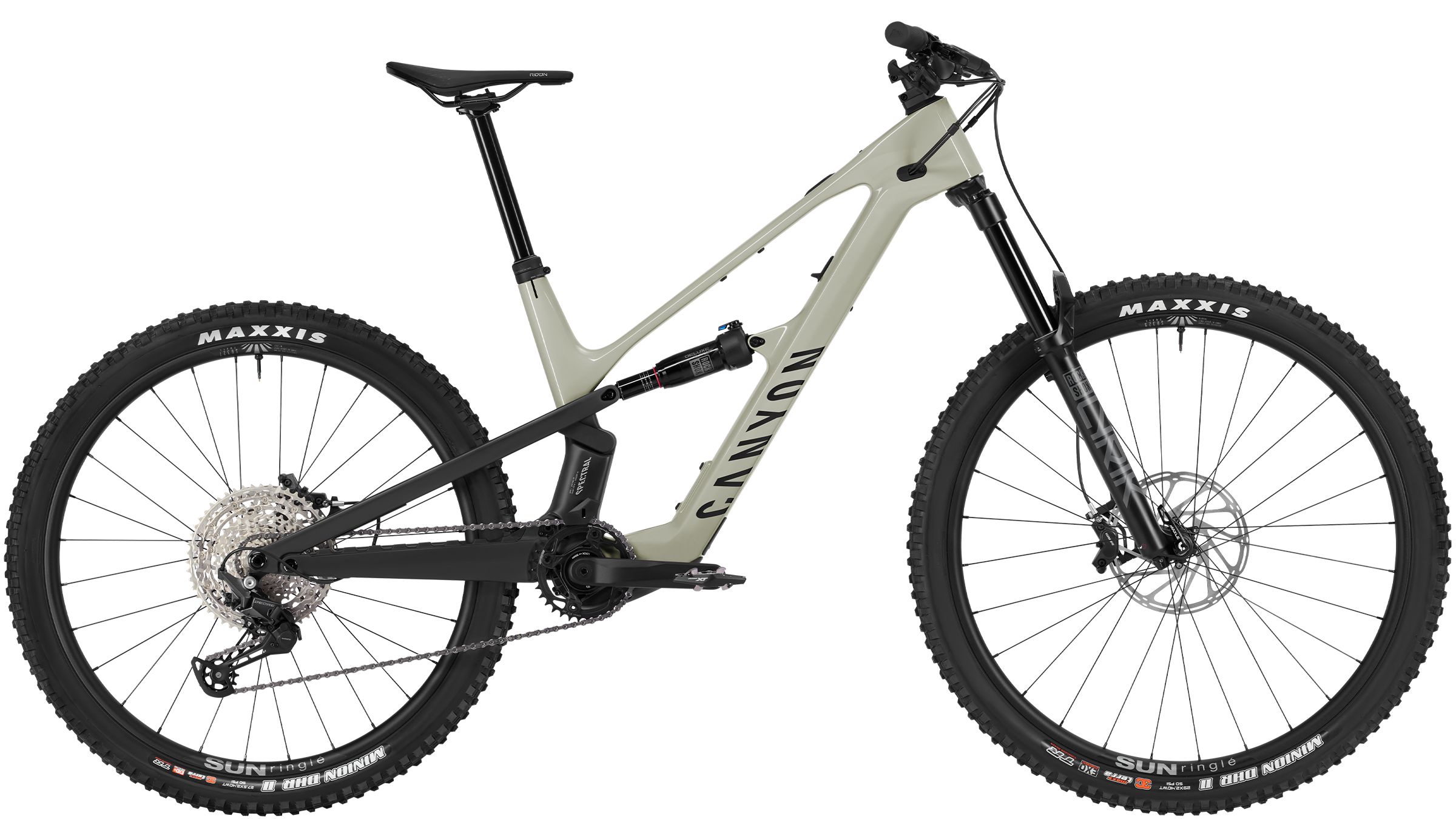 Spectral:ONfly CF 8 | £5,199 / € 5,599 / $ 5,999
Spectral:ONfly CF 8 | £5,199 / € 5,599 / $ 5,999
Finally, the CF8 looks like cracking value, with RockShox Lyrik/Deluxe Select+ suspension, Shimano Deore drivetrain, SRAM Code R brakes, and Sun-Ringle Trail Expert wheelset.





 Spectral:ONfly’s TQ motor
Spectral:ONfly’s TQ motor …and battery
…and battery Should Canyon have gone with another motor?
Should Canyon have gone with another motor?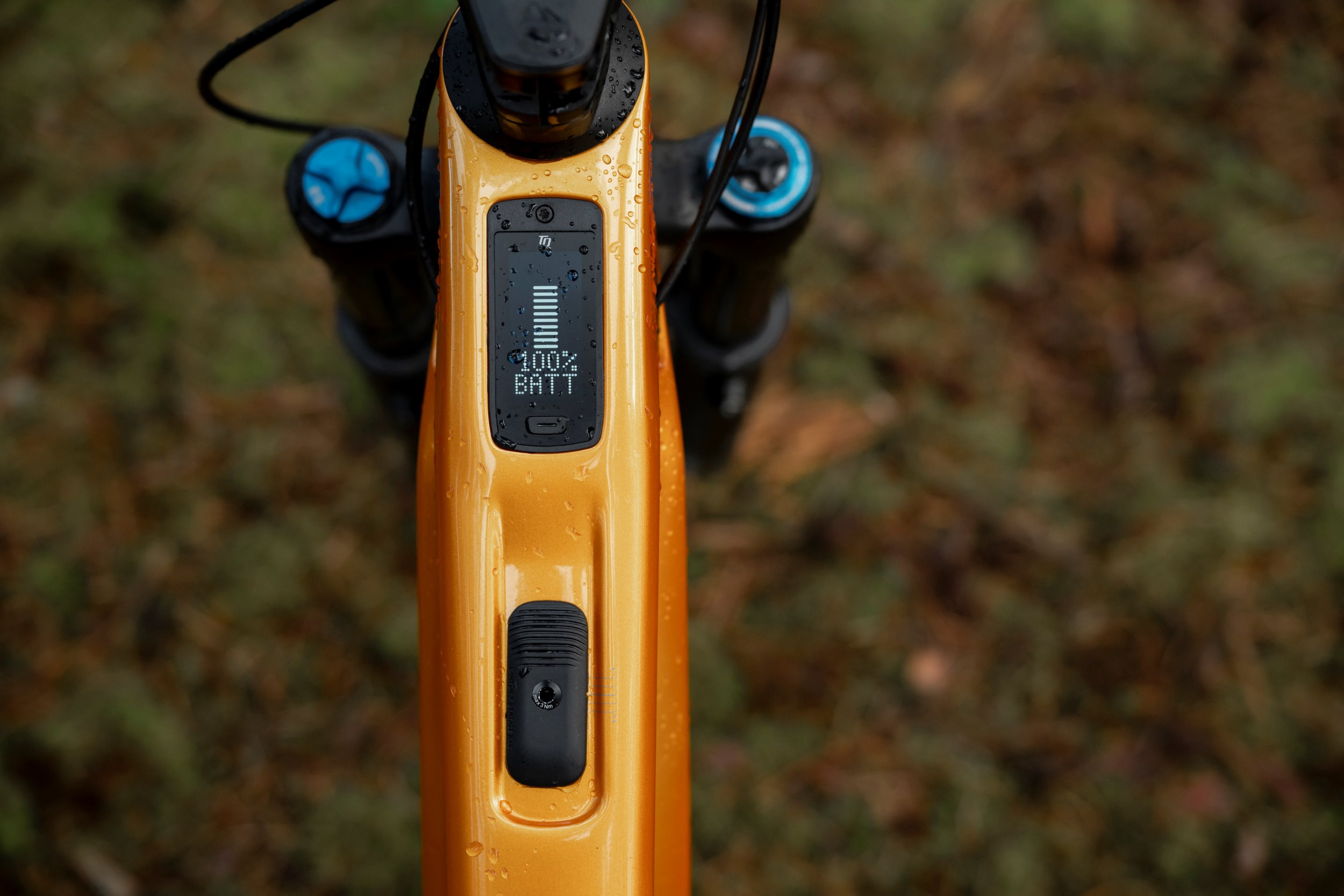 Frame details
Frame details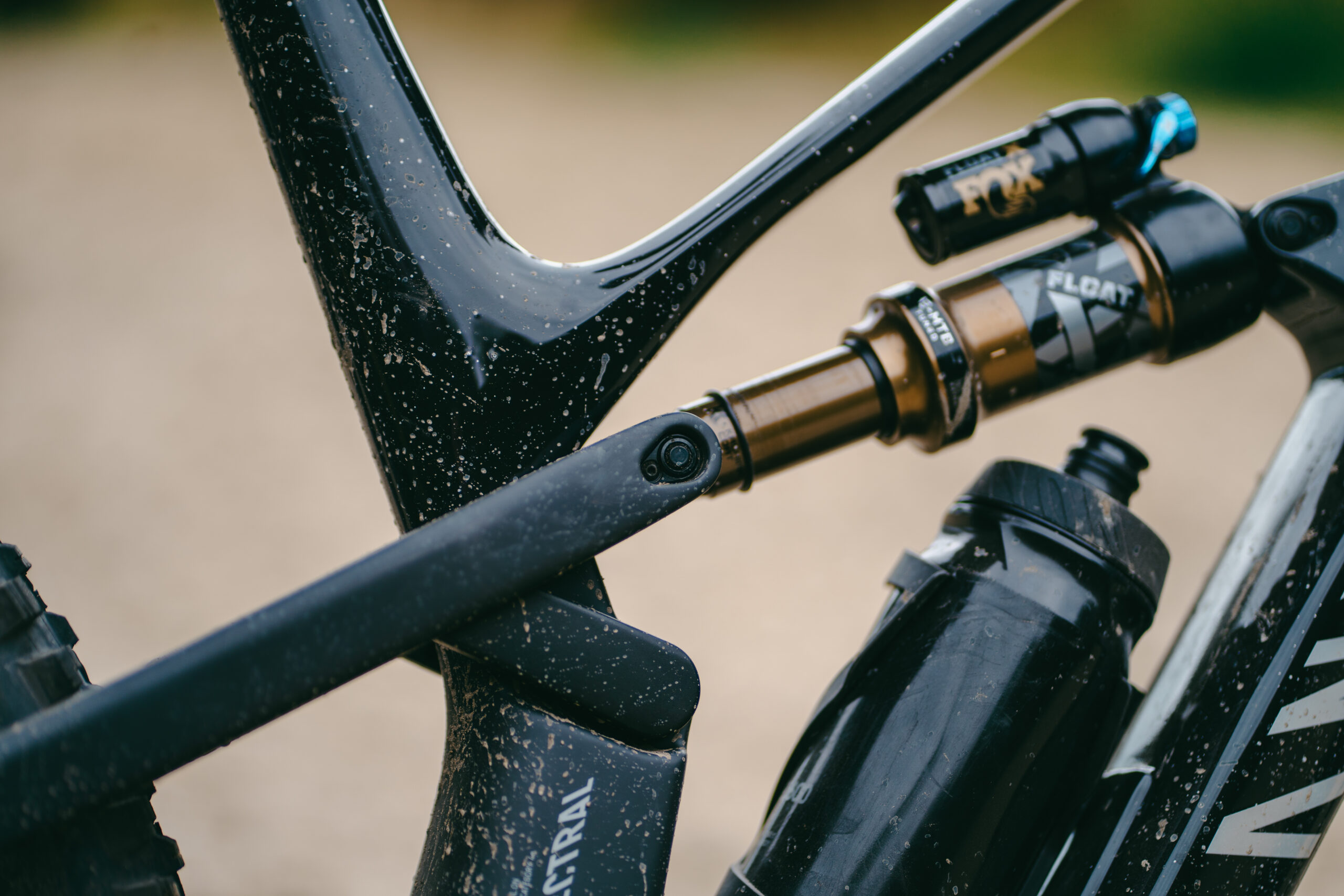 Suspension design
Suspension design